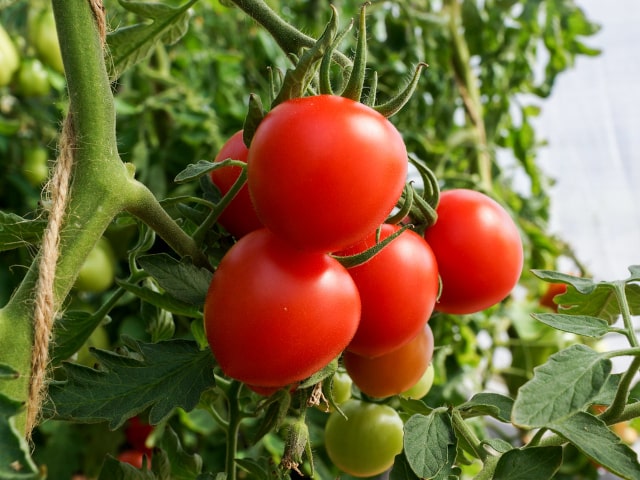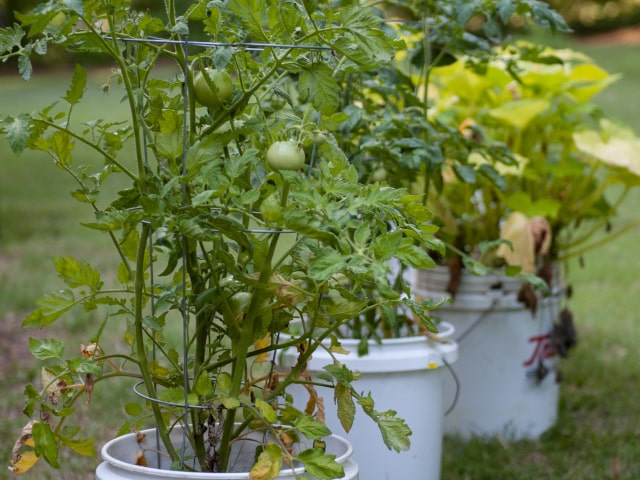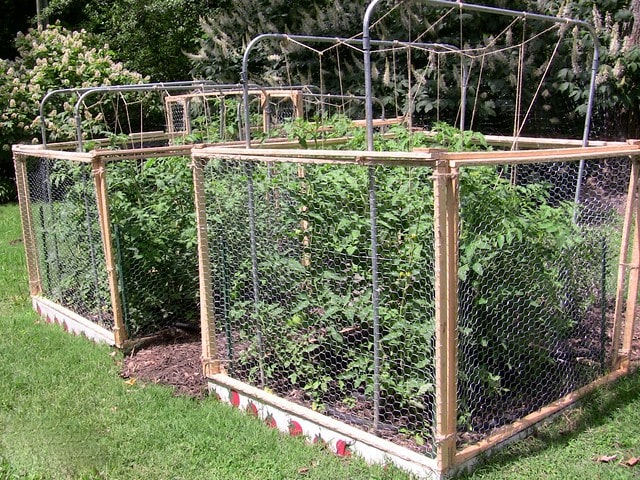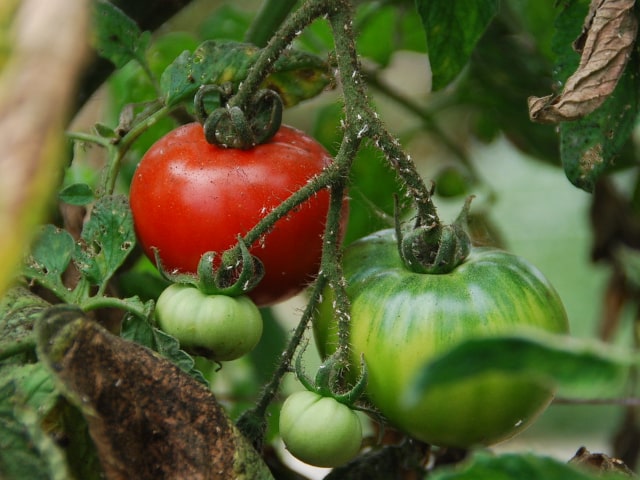
The tomato is one of the most popular vegetables among homeowners. Many people choose to grow tomatoes in their garden or even in containers on their balcony or patio. Whatever your choice might be, some good tomato growing tips are always helpful.
Growing tomatoes is not complicated, but you need to follow some set steps. They will ensure that your tomatoes grow healthy and strong, with rich, tasty fruits. You also need to know how to choose the best tomato variety to grow in your garden and some other tips for growing healthy tomatoes.
Before Planting
First things first. As you probably know, in gardening a lot depends on chosen potting mix. Tomatoes like commercial potting soil mixed with some worm castings. It's best to use potting mix and worm castings in 3:1 ratio.
When it comes to planting, you will want to plant seeds about three times as deep as the seed is wide. Small seeds stay near the surface while larger seeds need to be planted deeper. To test seeds, you can perform a germination test to make sure they are fine. Another way to go is to use pre-sprout tomato seeds to maximize your success.
You may also want to perform a quick soil test on the potting mix before you plant. You need to know that many of the commercial potting mixes lack some key nutrients or are overloaded with other nutrients.
Before planting, you should also prepare clear markers. Popsicle sticks broken in half can serve as good markers but you may use another type of a marker, too. Make sure to write the name of the variety on both sides of the stick using a ball point pen. In case it gets wet at least one side will remain visible.
Starting Seeds
It's always best to cover the seeds with a clear plastic cover and put them in a well-lit location. You may also give them a bit of a jump start with a heating pad underneath. Put the pad and the lights on a timer for about 16 hours a day.
Seedlings
When you see seedlings popping up, uncover them. Make sure to do it within 24 hours of their appearance. If you keep them covered it can lead to damping off, which can be caused by fungal infections. This is usually a consequence of keeping seedlings too wet.
If you notice your seedlings damping off you may try to revive them with a sprinkle of cinnamon or a bit of chamomile tea. However, it can't do much if a seedling is seriously affected. This is why it's important to uncover your seedlings and monitor their progress.
The soil need to be damp but not wet and not too dry. Some soil mixes are just not right for tomatoes so this is why it's important to have a quality soil mix.
Another thing to watch for is light levels. If your seedlings become leggy it's a sign that you are not giving them enough light. It's vest to move them to a different location or add more artificial lighting.
To make your seedlings stronger you can expose them to a fan on a timer. Make it blow on the seedlings through the day. This will help toughen up their stems. If you don't want to use a fan you can run your hands lightly across the tops of the seedlings from time to time. This will make them stronger.
Once your tomatoes get larger you can move them to a greenhouse or cold frame. You should make sure that they are not freezing so desired temperature should be between 50 and 80 degrees F.
Tips for growing tomatoes
If you choose to grow many varieties, chances are that you will end up with leftover seeds from previous years. Tomato seeds tend to store quite well for years. However, you need to keep in mind that the germination rates decrease over time.
It's best to keep everything organized in a notebook or an Excel sheet. Make sure to track date when you planted seeds, tomato variety, seed source, number of seeds planted, date of first seedling appearance and final number of seedlings. This will not only keep everything organized but it will also allow you to track the drop in germination rates over time.
Transplanting
Observe your tomatoes carefully so you can transplant them into larger containers as they grow. Move them to 2 inch containers first, then 3-4 inch containers. It will all depend on how fast they grow and how long does it take to move them to the garden.
You will know that your tomatoes are ready to be transplanted when they become a bit overcrowded and leggy. It's generally safe to transplant them after they develop their first true leaves. Those are the leaves that look like real tomato leaves.
Some gardeners recommend to prevent overcrowding by cutting the excess seedlings but that's just cruel: those are healthy little plants and as long as you react as soon as you notice overcrowding, it won't do much damage.
To transplant, gently remove a group of seedlings out of their cell. You can do that by pushing up from below, as you pull from the base of the plant above. Once they are out, try to ease the roots apart and try to keep as much soil as possible on the roots.
It's important to transplant a seedling as deep as possible in their new container. This is done to ensure support of the stems. If bottom leaves are covered, don't worry: it won't do any harm.
Leave them be for a few weeks and then transplant them to the larger container. At this point, you are getting close to the time when you have to plant them outside.
Hardening
This is a good time to start hardening your seedlings. This is a process in which you gently introduce them to the outside elements in order to toughen them up so they can easily survive in the garden.
It's important to do hardening carefully and gradually or else you may end up killing the seedlings. It's best to harden them off over 3 to 4 days. First, expose them to an hour of direct sun. Increase the exposure each day. When you set them out, make sure to fully protect them from the wind and to give them water.
Planting in the Garden
Finally, it's time to plant your seedlings in the garden! When planting, dig deeper holes over shallow trenches. If you plant them deep enough (by just leaving a few inches of leaves exposed above the ground) it will produce more robust plants that are also more tolerant to drought. When planted, your tomatoes will send out new roots from the buried stem.
It's probably useful to add a small handful of crushed eggshells to the planting hole so you an prevent blossom end rot, which is often caused by inadequate calcium levels. It's usually made worse by fluctuating moisture levels in the soil. Remember, tomatoes like rich soil, so it's good to add some manure or worm castings to the hole. Don't overdo it, though. About a full shovel per planting hole is enough. If you add too much, it will only raise nitrogen levels, which will produce many leaves but not enough tomatoes.
Some other things you may try to help your tomatoes thrive in your garden: mulching, adding a soaker hose under the mulch for watering and using a trellis.
Addition: Common Tomato Varieties
Here are some common tomato varieties you may wish to grow in your garden. Generally speaking, tomato varieties are classified as slicing, cherry and paste. Great varieties include:
- Slicing Tomatoes: Cour di Bue, Green Zebra, Tigerella, Better Boy, Glacier, Garden Peach, Pruden's Purple, Early Girl, Totem, Defiant, Arkansas Traveler.
- Cherry Tomatoes: Pearly Pink, Black Cherry, Sun Gold, Peacevine, Yellow Pear, Red Pear, Micro Tom.
- Paste tomatoes: San Marzano Paste, Purple Russian Paste, Polish Linguisa, Opalka Paste.
Photo credit: moz278




0 Comments